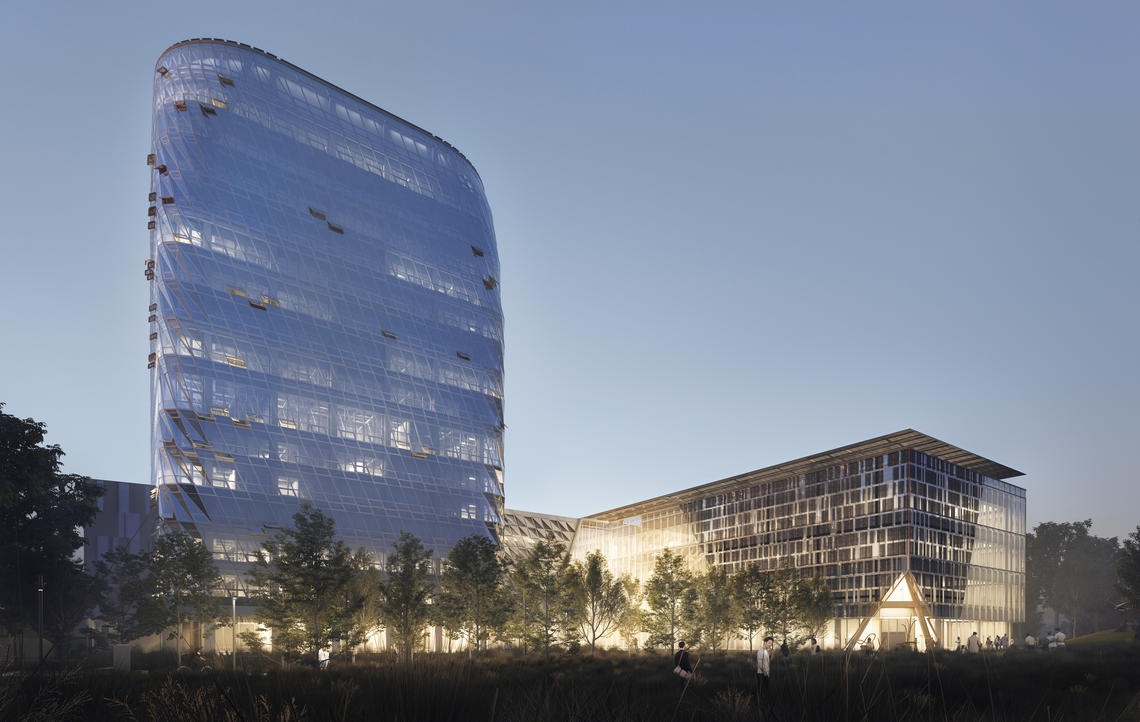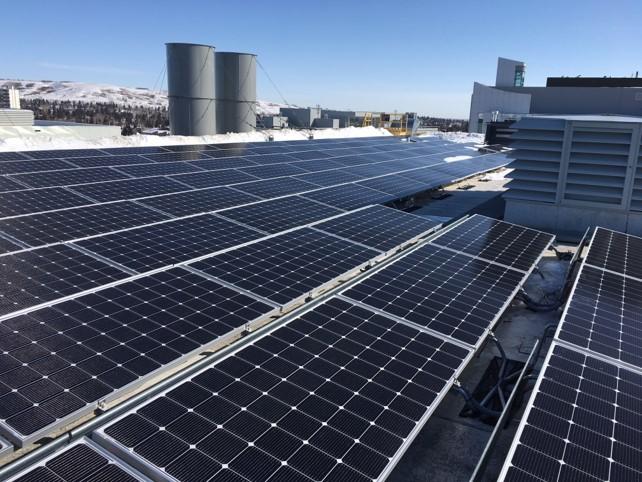
The redeveloped MacKimmie block will be one of the most energy efficient buildings on a campus.
Sept. 18, 2018

The redeveloped MacKimmie block will be one of the most energy efficient buildings on a campus.
The Government of Canada has ambitious goals when it comes to reducing greenhouse gas (GHG) emissions: as a signatory to the 2015 Paris Agreement, Canada is committed to reducing GHGs by 30 per cent across the country by 2030 in an effort to help reduce global carbon emissions. While many organizations are working to understand how to meet these targets, the University of Calgary has surpassed the government’s 2030 target more than a decade ahead of time. At UCalgary, we’ve attained a GHG reduction of over 30 per cent across the institution since 2008 as we work toward the goal of reducing GHGs even further to 80 per cent by 2050.
The university has some big goals of our own when it comes to sustainability; we’re striving to attain net-carbon neutrality, to be one of the most energy-efficient campuses in Canada and to be a Canadian leader in healthy high-performance green buildings. It’s a tall order, but as one of the leaders in carbon emissions reductions among post-secondary institutions in Canada, we’re making a significant impact by applying entrepreneurial thinking to create innovative solutions when it comes to the climate challenge.
How we’re reducing our carbon emissions footprint
UCalgary has reduced GHG emissions* by approximately 69,000 tonnes annually by implementing initiatives and programs that make our energy supply and buildings more environmentally friendly and efficient. To put that in perspective, that’s equivalent to the energy generated by about 17 wind turbines in a year and is one of the largest GHG reductions of any post-secondary institution in Canada.
Guided by the University of Calgary’s 2010 Climate Action Plan and more recently by the Institutional Sustainability Strategy (ISS) and its framework on sustainability in administration and operations, three key steps contributed to this success. These include introducing on-campus cogeneration to reduce the carbon intensity of our energy supply, reducing energy demand by investing in energy efficiencies in existing buildings, and mitigating emissions growth through progressive energy and carbon requirements for all new buildings.
“From striving for net-zero buildings, to implementing bold initiatives to reduce the carbon footprint of our energy supply at UCalgary, we are driving innovation and leadership in sustainability,” says Dr. Elizabeth Cannon, president, University of Calgary. “Experiential learning opportunities for students — like Campus as a Learning Lab — are also promoting meaningful collaboration among students, faculty and staff in all aspects of sustainability.”

A solar photo-voltaic array is generating more than 66,000 kWH per year to help power the building.
'We are committed to pursuing innovative solutions to climate change'
UCalgary is saving approximately $4.8 million in annual utility costs by focusing on reducing the GHG emissions from our built environment, which accounts for over 99 per cent of the university’s emissions. In 2016-17, GHG emissions per student were 36 per cent lower than 2008, while emissions per gross square metre have been reduced by just over 40 per cent — proof that year over year, our carbon emissions are significantly less.
“We are committed to pursuing innovative solutions to climate change,” says Joanne Perdue, chief sustainability officer. “As a post-secondary institution and thought leader, it’s critical that we model the way forward and infuse sustainability across our institution, in our operations as well as through research, teaching and learning initiatives. Innovation in sustainability is a cross-cutting idea that links our Academic Plan, Research Plan and operations.”
What’s next?
“We will continue to blaze a trail forward with new endeavours like the redeveloped MacKimmie Tower, new link and block, a project that aspires to attain net-carbon neutrality and reduce energy use by 90 per cent,” says Perdue. “As one of only three post-secondary institutions taking part in the Canada Green Building Council’s (CaGBC) new Zero Carbon Building Standard pilot program to drive change in the green building industry, UCalgary is making important contributions to reducing overall Canadian GHG emissions.”
Learn more about how the university is progressing against the goals laid out in the ISS at the Oct. 25 Institutional Sustainability Strategy Progress Event as part of Sustainability Week, Oct. 22 to 26.
*Scope 1 and Scope 2 emissions, taking into account energy efficiency conservation measures in 2017-18.